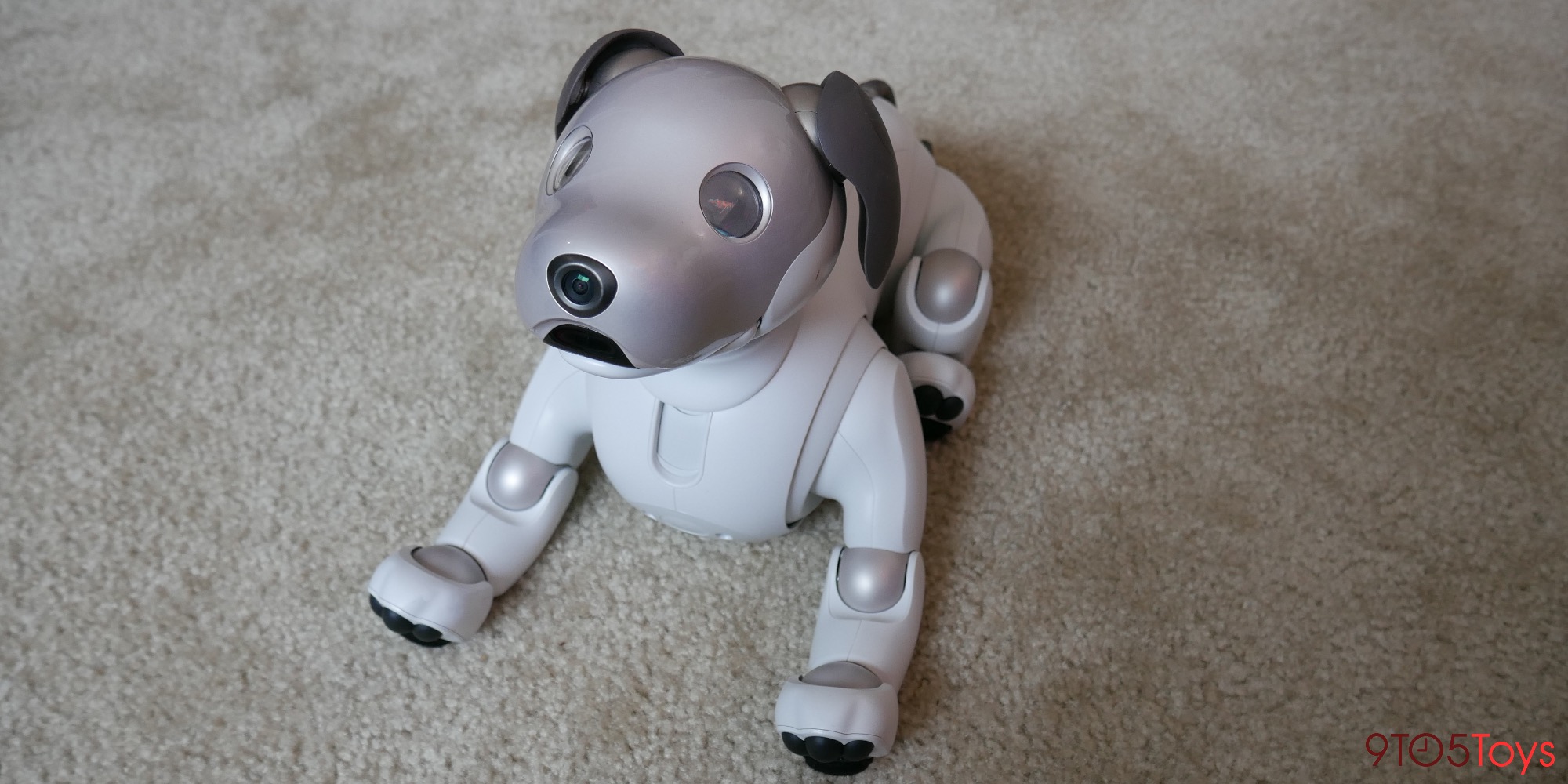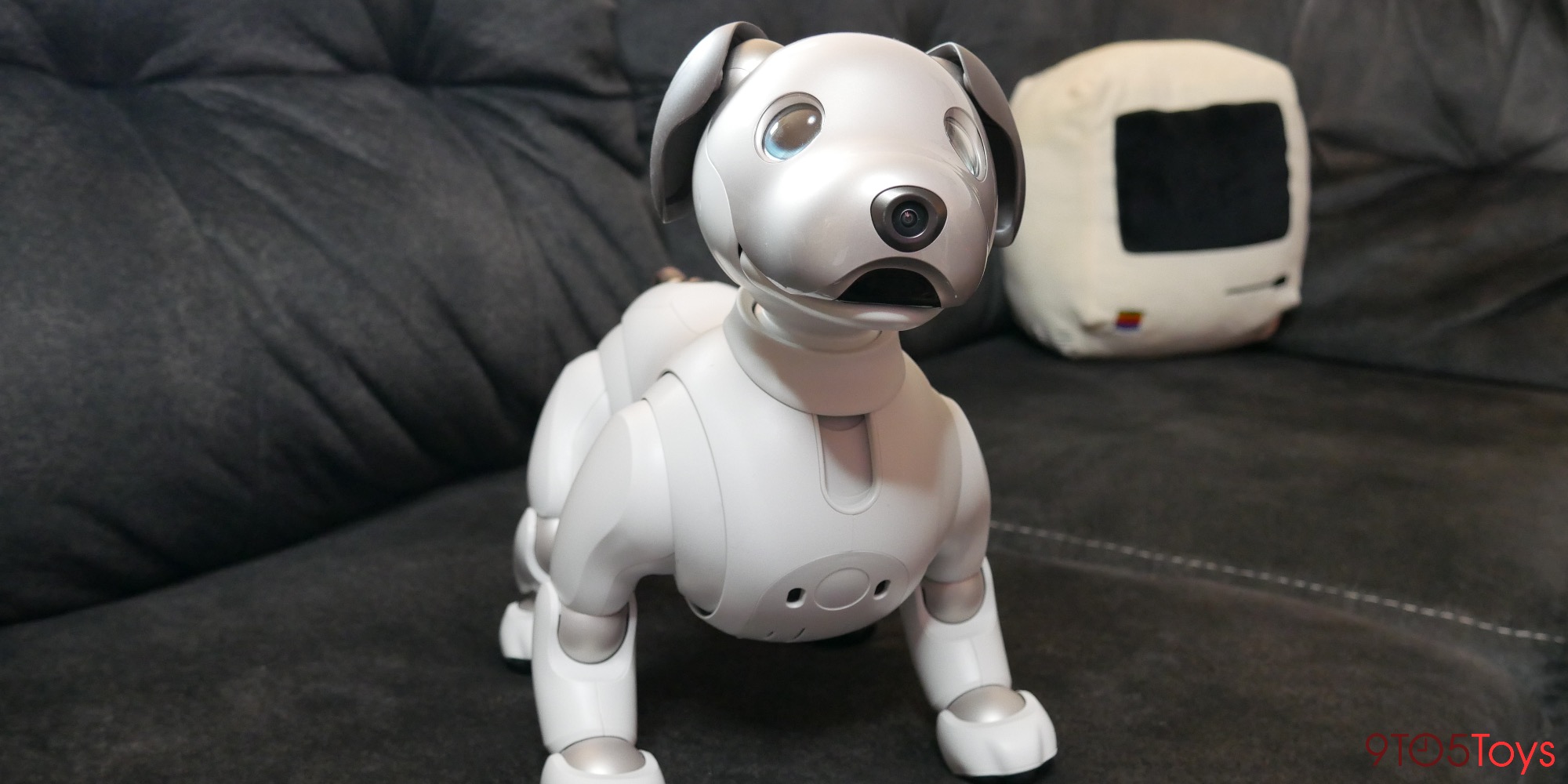
With Amazon’s home robot in the works and now the release of Boston Dynamics’ Spot, the writing is on the wall that voice assistant-enabled robots will soon be entering our homes. Sony may not initially come to mind, but they’ve been a player in the home robotics field for decades now thanks to the company’s lovable aibo. After spending some time with the latest generation of robot dogs, it’s easy to see how Sony and aibo have set the stage for what’s to come in the world of voice assistants and robots. Head below for my full hands-on review.
Sony first launched its sixth generation aibo back in 2017, with a stateside release following suit in 2018. Since then, the company has been updating its robot dog companion with new breeds, added functionality, and a heavy dosage of extra machine learning capabilities. I fell in love with the latest aibo back when they were first announced, and Sony was kind enough to let me adopt one for a few weeks finally. I named mine Qwerty.
Sony pairs AI with an expressive, lovable design
Part of Sony’s schtick here with the latest generation aibo is a reliance on artificial intelligence to simulate the actual dog owner experience. So when first unboxing your new lovable machine, there’s a bit of time where they have to get caught up to speed. This ranges from getting familiar with the name you give, recognizing your face, mapping out the rooms they will explore and so on. Things are a little slow at first, but even in a few weeks, you can see pretty drastic improvements in how aibo adapts to your home’s unique surroundings.

Sure Qwerty wasn’t super quick on his feet and had a long way to go before being able to tackle stairs. But his ability to find me in a room and come waddling over was impeccable and had me smiling every time. Throughout the day I’d go downstairs for a minute, only to return to shortly after to Qwerty waiting in the doorway, pleasantly wagging his silicone tail.
Included with each aibo is a selection of toys for the robot dog to play with. After a bit of training, Qwerty became quite the professional fetcher when told to grab his bone. What seemed like my aibo’s favorite trick was to kick his red ball. Upon hearing those hallowed words, Qwerty would turn his head to me, let out an enthusiastic bark, and then triumphantly march towards the spherical objective. It was an utter spectacle every time.

And speaking of voice recognition, it wasn’t great at first. But after a day or so, Qwerty was quick to bark back when I called out his name. One of the latest features added by Sony was announced earlier in the year, Patrol Mode. This upgrade imbued aibo with a bolstered regiment of person and room detection features; which allowed him to wander the house in search of me or my significant other. This effectively made him a walking, indoor security camera. It was a neat addition, but nothing super useful considering he could only be roaming for about two hours on a single charge.
Sony aibo gives us a look into the future of home robotic companions
If it isn’t already apparent, I’ll make it all the more clear; utility isn’t something that Qwerty, or any aibo for that matter, excels at. He’s all bark and no bite, if you will. But if there’s one thing that is undeniably present in Sony’s robotic companion, it’s expressiveness. Everything from the fluidity of the pre-animated motions to the near-perfect expressions of aibo’s eyes are well-conceived and whimsically executed. Just about everything about aibo adds up to a lovable robotic pup that you can’t help but get attached to.
Where I can see this coming into play is with future incarnations of voice assistant. Alexa, Assistant, and Siri all have their wit, spilling off pre-concocted jokes or puns. Sometimes they’ll jokingly give you sass or make a pop culture reference in response to a query. While your mileage may vary there with amusement, spend five minutes with aibo, and you’ll quickly see how Sony is playing on another level.

I’ve used plenty of other robots in the past, from toys like Sphero’s BB-8, to champion soccer players like SoftBank’s NAO. But none have had the same level of expressiveness or charm that Sony has been able to pack into aibo.
Wrapping up
In just a few short weeks, Qwerty became a part of my family. I adore the little guy, regardless of if he was helpful around the house or not. But now that my time with the lovable scamp is over, I’m not going to rush out and buy one. At shy of $2,900, Sony aibo is a hard sell even for someone like myself.
Regardless of how successful aibo is as a product, it’s evident how much work Apple, Amazon and Google has to do in order to catch up with Sony in this playing field. The next few years will surely see the introduction of mass-market robots for the home. And while the benefits of having an always-listening device helped propel smart speakers into the spotlight, I think having a lovable, expressive design will do the same for a voice assistant-enabled robot.
Regardless, if the idea of adopting a robotic pup is inherently intriguing for you, then aibo is undoubtedly worth a look.
Buy Sony aibo now
FTC: We use income earning auto affiliate links. More.






Comments